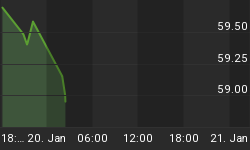Solar, wind and EVs won the lion’s share of clean energy investments for 2020, followed by a major uptick in money flowing into hydrogen tech and carbon capture and storage. But there is one renewable energy source that should be ignored only at the peril of the climate ...
The tidal and wave power generated by our oceans.
Without this, it’s unlikely we’ll be able to reach our global climate goals.
It’s a fringe technology much like hydrogen and carbon capture, but it shouldn’t be.
Wave energy has the potential to give us around 29,500 TWh per year. This means that ocean power alone could theoretically meet the energy needs of the entire globe, according to the International Renewable Energy Agency.
That’s because not everyone has this potential, and Mother Nature will likely dictate who will control this energy bastion.
Europe has some of the most developed ocean power facilities for electricity generation. Yet, in 2019, ocean energy accounted for a mere 0.06 percent of all the electricity generated from renewable sources.
We may have just reached the tipping point, though. That point when tidal and wave power finally go mainstream … and even begins to rival conventional renewables such as solar and wind.
We could be on the edge of a “blue” energy explosion--the holy grail of climate change.
And Europe, for one, is ready to go as blue as it possibly can.
While still focusing chiefly on wind power, the European Commission’s upcoming offshore energy strategy will seek to boost other tidal power. It’s aiming for 60 gigawatts of ocean energy by 2050, which will require a massive ramp-up of technology … at an unprecedented speed.
Currently, there are 13 megawatts of ocean power facilities being tested in EU waters, with tidal considered closest to commercialization. Wave energy technologies, on the other hand, are mostly still in the R&D stage.
Eventually, though, ocean power could far surpass solar and wind power.
It’s clean. It’s compact, and it has higher energy density than solar or wind projects.
South Korea’s Sihwa Lake Tidal Power Station is the world’s largest, with an installed capacity of 254 megawatts.
South Korea easily added it to a 12.5 kilometer-long seawall that was built in 1994 to protect the coast against flooding.
If you compare it to the 781.5 megawatt Roscoe WInd Farm, which takes up over 200 square kilometers of land …
Or the Bhadla Industrial Solar Park in India, which covers 45 square kilometers ….
And the Tengger Desert Solar Park in China, which covers 43 square kilometers …you can see the difference.
Harnessing the energy of the ocean won’t take up critical land.
But for now, it’s only Scotland that generates any meaningful amount of ocean power.
Scotland has enormous natural potential thanks to its impressive archipelago of islands with heavy tidal currents that can easily be tapped.
Now, Scotland has the largest tidal array of underwater turbines in the world.
And it has exceeded expectations.
MeyGen is now planning a massive increase in the number of installations.
Canada, too, hopes to follow in Scotland’s footsteps as a lead developer of ocean power technologies.
Canada has a number of tidal energy schemes along its Atlantic coast, primarily in Nova Scotia, where scores of competing companies are testing various prototypes.
The UK has more than 20 of these projects in the pipeline. Some of these are still in the research and development stage, but many are currently being scaled up for deployment.
China is also encouraging tidal stream energy by offering a generous feed-in tariff that is three times the price of fossil fuels. The incentive is high enough that one Chinese company is already profitably feeding ocean power into the main grid.
As for the United States, there are an insufficient number of suitable sites to harness ocean power, so we will have to be content with other low-carbon technologies such as solar, wind, and biofuels, where we have a better competitive advantage.
















